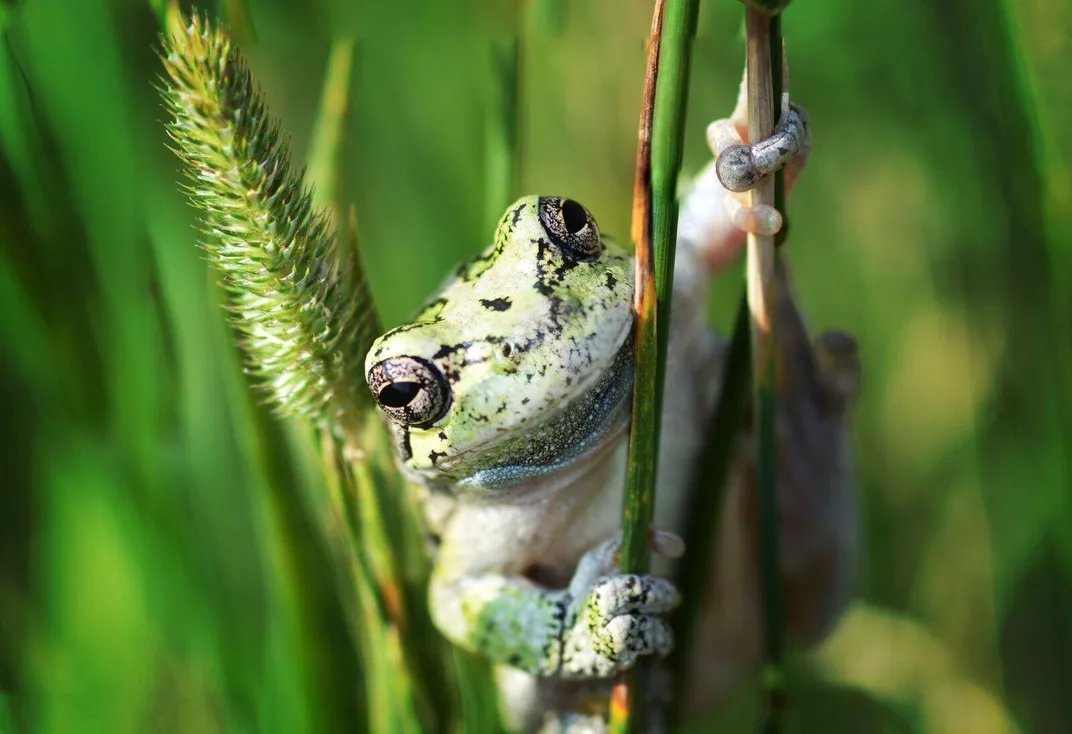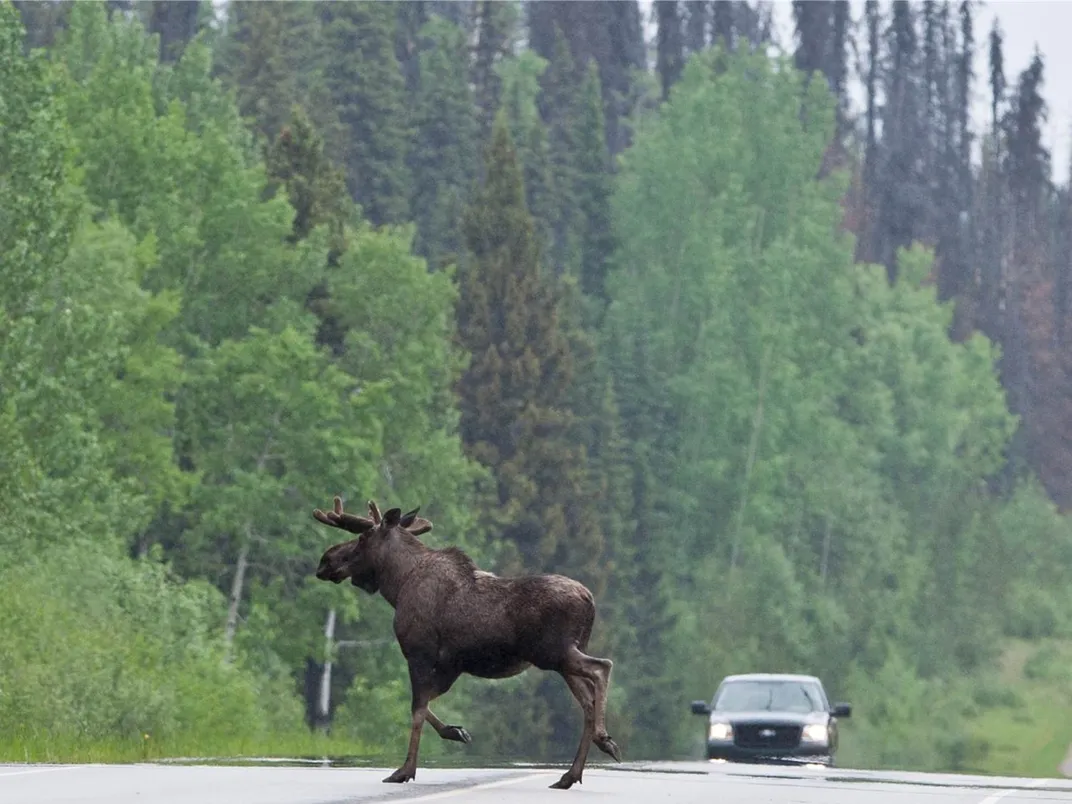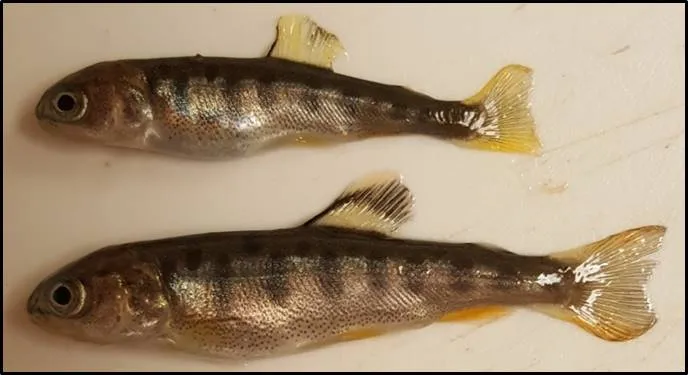The Hidden Dangers of Road Salt
It clears our roads, but also spells danger for fish, moose—and sometimes humans
/https://tf-cmsv2-smithsonianmag-media.s3.amazonaws.com/filer/a1/da/a1da7d12-9479-4327-9021-4b401b2f9995/dsc_7626.jpg)
The mornings after snowfall, your shoes scraped over it as you walked through ice and gravel on the sidewalk on your way to school. If you were up late at night, you might see massive trucks sprinkling it behind them as they shoveled freshly fallen snow. Cities like Chicago and Minneapolis spread the stuff liberally because it helps lower the freezing point of water, and cuts relatively quickly into ice on contact.
It’s road salt, and it’s ubiquitous to anyone who grew up in a northern climate. But what happens in springtime and summer?
An increasing amount of research is showing that road salt doesn’t just dissolve into thin air. Instead, as it splits into sodium and chloride ions, it gets absorbed into roadside plants, licked up by wildlife or accumulates in aquatic ecosystems—sometimes with devastating consequences. All that saltiness can help invasive or even toxic species spread, not to mention increase traffic danger due to deer and moose drawn to salt-covered roads.
“It has a really widespread number of effects on the whole food web or ecosystem,” says Rick Relyea, a professor of biological sciences at Rensselaer Polytechnic Institute.
Relyea has studied how road salt runoff impacts lakes as part of the Jefferson Project at Lake George in New York state. Recently, he found that road salt can reduce the size of rainbow trout hatchlings by about 30 percent, influencing their ability to elude predators and decreasing the number of eggs they lay. One experiment he worked on found that higher levels of salt could change the male-female sex ration of wood frogs.
Relyea and others dissected hundreds of frogs raised in different tanks from eggs to determine that the number of male tadpoles that survived hatching increased by 10 percent, from 40 percent to 50 percent. While he hasn’t yet studied the long-term impacts this could have on the frog population, fewer females could mean fewer eggs are laid, thereby causing population level changes over time.
Other research they’ve conducted has shown that higher levels of salt can kill tiny, shrimp-like amphipods which provide important food sources for fish and insects as well as snails and clams. It can also kill off zooplankton—the minute, abundant organisms that form the baseline resource for entire ecosystems—which can inversely cause the amount of phytoplankton they feed on to go up.
Ultimately, “you end up with a loss in biodiversity,” says Hilary Dugan, a fresh water scientist at the University of Wisconsin-Madison. Dugan recently found out just how much salt is accumulating in freshwater lakes in the northern U.S. Her analysis, published last month in the Proceedings of the National Academy of Sciences, finds that road salt is the major driver of increasing levels of chloride in lakes near urban populations.

Rising salt levels can make some environments more vulnerable to exploitation by invasive species. “By loading these lakes with salt, we might actually be giving a leg up to invasive species which are more adapted to brackish environments,” Dugan says. Relyea points out that cyanobacteria, sometimes wrongly referred to as blue-green, can have a toxic effect on fish and other aquatic species, as well as affecting drinking water for humans.
A study released in 2014 found that roadside plants contain much higher levels of salt than other plants of the same species, which can alter the development of the butterflies that feed on them. Emilie Snell-Rood, an associate professor in ecology, evolution and behavior at the University of Minnesota, says that some milkweed in particular had up to 30 times more sodium either absorbed inside or stuck to the outside of the plants.
While the effect on the plants is uncertain, she and her team wanted to see what happened to the butterflies that depended on those plants. So they reared different groups of monarch and cabbage white caterpillars on plants with lots of sodium and those with normal levels of sodium. They found that the salt seemed to make the monarch and cabbage white female butterflies brainier and the males brawnier.
What this actually meant was the males had higher levels of a certain protein which translates to flight muscles, while the females had larger eyes; Snell-Rood says that 75 percent of microscopic butterfly brains are dedicated to vision. “Moderate levels of salt input were somewhat beneficial,” she says. Since salt is often limited in the natural world for creatures like butterflies, she says, it can act as a super stimulus when they do encounter it.
“Road salt is kind of like potato chips for animals,” she says, adding that she is currently looking to receive a state grant to restore roadside plants as potential pollinator habitat for monarchs and other pollinators. But similar to the effects of enhanced CO2 on a forest ecosystem, that benefit only extends up until a point. There was a high death rate of butterflies that Snell-Rood exposed to the highest levels of sodium in their experiments.
Snell-Rood's work shows just how profound an effect salt can have on an ecosystem. Those effects can also be less direct than accumulation in plant life: By attracting some species to roadsides, salt can put animals in danger from getting hit from passing cars. They could also then be exposed to chemicals from car exhaust, spilled gas or heavy metals from break pad run off and other things.
In this way, road salt can—indirectly—end up endangering humans. Roy Rea, a biology and forestry instructor at University of Northern British Columbia in Prince George, is six years into research studying the relationship between the salt that accumulates around roads and vehicle collisions with wildlife. It’s a big problem—in some cases, a nearly seven-foot tall, 1,500-pound problem.

Rea first heard about moose being attracted to road salt anecdotally, from salt truck drivers who encountered a massive moose licking at salt they dropped in the yard. Other people told him how they’d see moose licking salt accumulated on their cars while sitting in the driveway—something like a free carwash in northern British Columbia.
In 2011, he began using camera traps in northern British Columbia around roadside salt accumulations to find that the areas are particularly popular with moose, which lick the salt off the ground. “The females need increased mineral intake to produce good milk for the calves and the males need it to produce antlers,” Rea says.
“It accumulates in these pools and the moose are in there using this all summer long. Because they’re so close to this high speed traffic, and going back and forth across the road to get to the salt pools, some of them get clocked,” Rea says.
He adds that the moose are often active at night, which makes them hard to see on roads where cars sometimes only pass every 10 minutes or so. “If you’re driving down a highway that’s black asphalt, and you’ve got a black background of the night sky and you’ve got these dark brown to black animals in the middle of the highway and you don’t see them until you’re right on top of them, then it’s already too late.”
A study he published a couple of years ago actually matched collision hotspots with moose to areas where these roadside salt licks occurred. Out of 30 moose vehicle collision hot spots, nine of them were next to a salt lick. These crashes can be lethal to humans and are almost always lethal to the moose, which Rea says are already in decline across parts of North America.

Beyond wildlife collisions, increasing saltiness can have other consequences on humans. Dugan says that some lakes with increasing levels of salt are the source of drinking water for towns and cities, and removing it can be very expensive. High levels of chloride can produce an unpleasant taste, but it can also produce health issues with people on low-sodium diets due to diabetes or other health issues. The increase in cyanobacteria can also put toxins into lakes people swim in.
It can also affect the economy via tourism and property values, Relyea says. Even non-toxic algae can make water cloudy or murky, which is bad aesthetically for cottagers and others. “Having more algae and less clarity in the water makes the value of those lakes go down to people,” he says. “It’s not just a biological problem. It’s an aesthetic problem, a tourism problem, an economic problem; it’s all of these things.”
One possible solution is salt alternatives, including ones that use things like beet juice or distillation byproducts to melt away snow and ice. A study published in February that Relyea coauthored examined some of these, and found that the alternatives can be even harder on aquatic ecosystems than salt, particularly when it comes to fertilizing algae. “It’s like adding compost to the lake,” he says.
Another solution is simpler, and involves using curved shovel blades on the trucks that clear highways more effectively. This eliminates the need for using so much salt and keeps roads safer.
“We’ve been dramatically increasing the amount of salt per mile since the 1970s, even in places where we don’t have any substantial increases in the amount of road miles,” he says. “The answer isn’t really in alternative salts but in less salt,” Relyea says. While precious little work has been done on the effects of high salt levels in waterways, he says that all the guidelines say this could be lethal for many species.
Dugan stresses that using less salt is the answer in many cases, and that educating people to pour less of it on their driveways and sidewalks could help a lot.
“You can maintain safety by using a lot less road salt,” she says.
Correction, May 30, 2017: The third photo in this article was initially attributed incorrectly to Hugues B. Massicotte.
/https://tf-cmsv2-smithsonianmag-media.s3.amazonaws.com/accounts/headshot/joshua-learn_copy.jpg)
/https://tf-cmsv2-smithsonianmag-media.s3.amazonaws.com/accounts/headshot/joshua-learn_copy.jpg)